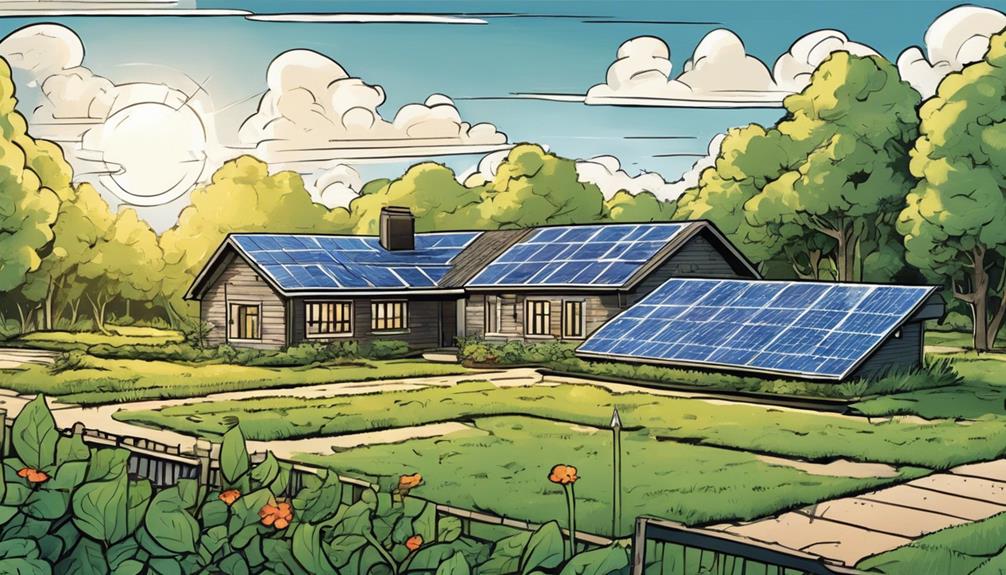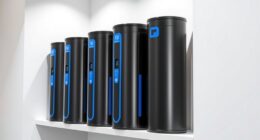Wind generators for your home can be a smart, affordable way to tap into renewable energy and reduce your electricity bills. With costs decreasing considerably over the years, investing in a small wind turbine is more accessible than ever. You could cut your energy costs by up to 50%, especially if you live in a windy area. Just keep in mind that you'll need to understand local zoning regulations and permits before installation. Plus, the right components and site assessment are essential for ideal energy capture. There's plenty more to explore about making the switch to wind energy! As with any major home investment, it’s important to do thorough research and consider the long-term benefits of wind turbine generators. By harnessing the power of the wind, you can significantly reduce your carbon footprint and contribute to a more sustainable future. Many homeowners are finding that the initial investment in wind generators pays off in the form of lower electricity bills and a cleaner, greener energy source for their homes.
Key Takeaways
- Wind energy can reduce electricity bills by up to 50%, making it an affordable renewable energy option for homes.
- Small wind turbines cost between $15,000 and $75,000, with long-term savings often surpassing initial installation costs.
- Federal tax credits of 30% under the Inflation Reduction Act can significantly lower the financial burden of installing wind systems.
- Understanding local zoning regulations and obtaining necessary permits is crucial for a successful wind turbine installation.
- Assessing local wind resources with on-site data ensures optimal turbine placement for maximum energy generation.
Overview of Wind Energy

Wind energy is rapidly becoming a key player in the quest for sustainable power. With around 9% of total electricity generation in the U.S. coming from wind, this renewable energy source is gaining traction fast. The costs of wind energy have dropped by 70% since 2009, making it more accessible for homeowners like you.
Additionally, diversifying your energy portfolio with renewable sources like wind can help protect against fluctuating energy costs and market downturns. If you live in a rural area, you might find that small wind turbines can harness local wind resources effectively, turning your home into a clean energy powerhouse.
By investing in distributed wind energy, you could potentially eliminate your electricity bills altogether, depending on your wind availability and the system's efficiency. Imagine generating enough home energy to cover all your needs—it's not just a dream!
The minimal environmental impact of wind energy supports sustainability while meeting national energy demands. Tax advantages available when investing in renewable energy can further enhance your savings.
Key factors influencing your decision to install small wind systems include available space and connectivity to the electrical grid. By understanding these elements, you can better assess how wind energy can fit into your lifestyle and contribute to a greener future.
It's time to explore how you can benefit from the clean energy revolution!
Economic Benefits of Wind Generators

Installing wind generators can lead to considerable economic benefits for homeowners. Advanced materials used in wind turbine design can enhance efficiency while reducing costs, making the investment even more appealing. By choosing to install a wind system, you could potentially cut your electricity bill by up to 50%, which means more money in your pocket each month.
The average cost of small wind turbines ranges from $15,000 to $75,000, but the long-term savings can considerably outweigh these upfront expenses, especially if you live in an area with favorable wind resources optimal wind speeds.
Additionally, federal tax credits of 30% under the Inflation Reduction Act of 2022 can help offset installation costs, making it even more economically feasible for you to invest in wind energy. Homes that feature renewable energy systems like wind turbines often see an increase in property value, attracting buyers who prioritize sustainability and lower utility costs.
Ultimately, by investing in a small wind turbine, you're not just saving on your electricity bill; you're also making a smart financial choice. With the potential for long-term savings and increasing property value, it's clear that installing a wind generator can be a wise economic decision for many homeowners.
Installation and Permitting Process
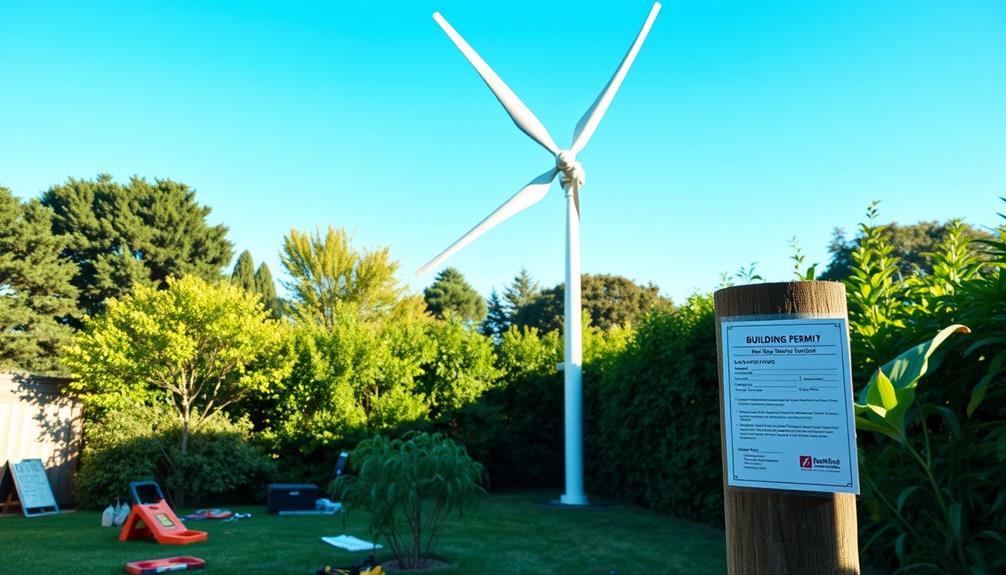
Before you can enjoy the benefits of a wind generator, you'll need to navigate the installation and permitting process. It's essential to understand your local zoning regulations since they can vary greatly from one area to another. Start by consulting these regulations to guarantee your installation process complies with any height limits or other restrictions, often around 35 feet.
Additionally, it's wise to take into account how energy-efficient solutions like heat pumps can complement your renewable energy setup, as they often share similar permitting challenges and regulations common causes of heat pump failure.
You'll typically need to acquire permits from local building inspectors, planning boards, or boards of supervisors. These approvals address safety concerns, aesthetic concerns, and environmental impacts.
Engaging with local authorities early on can streamline this permitting process and help you avoid potential obstacles related to neighbor objections and zoning issues.
The Clean Energy States Alliance offers a toolkit that can assist local governments in creating zoning frameworks for renewable energy projects, which can be beneficial for you as well.
Components of Wind Systems
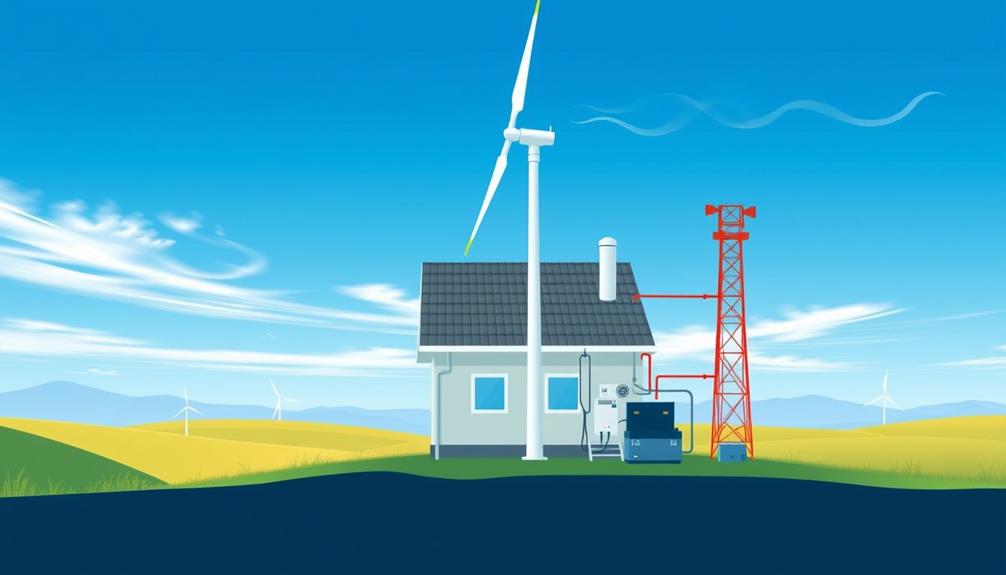
Understanding the components of a wind energy system is key to maximizing its efficiency and effectiveness. A typical small wind system includes essential parts like the rotor, which captures wind energy, and a generator or alternator that converts this energy into electricity.
Additionally, the presence of a well-designed home security system can complement renewable energy efforts, providing peace of mind as you invest in sustainable technologies. The tower elevates the turbine, ideally placing the rotor blades at least 30 feet above nearby obstacles to optimize wind capture and energy generation.
The average wind speed in your area greatly influences how much energy your turbine will produce. Additionally, balance of system components, such as wiring and controls, play an important role in overall performance.
Keep in mind that installation costs can vary considerably based on local zoning regulations, permitting, and utility interconnection expenses. In 2021, the average cost for small wind projects was around $5,120 per kilowatt.
A well-designed system should incorporate a tail for aligning the rotor with the wind direction, ensuring efficient operation. By understanding these components and their impact on performance, you can make informed decisions when investing in wind energy for your home.
Assessing Wind Resources
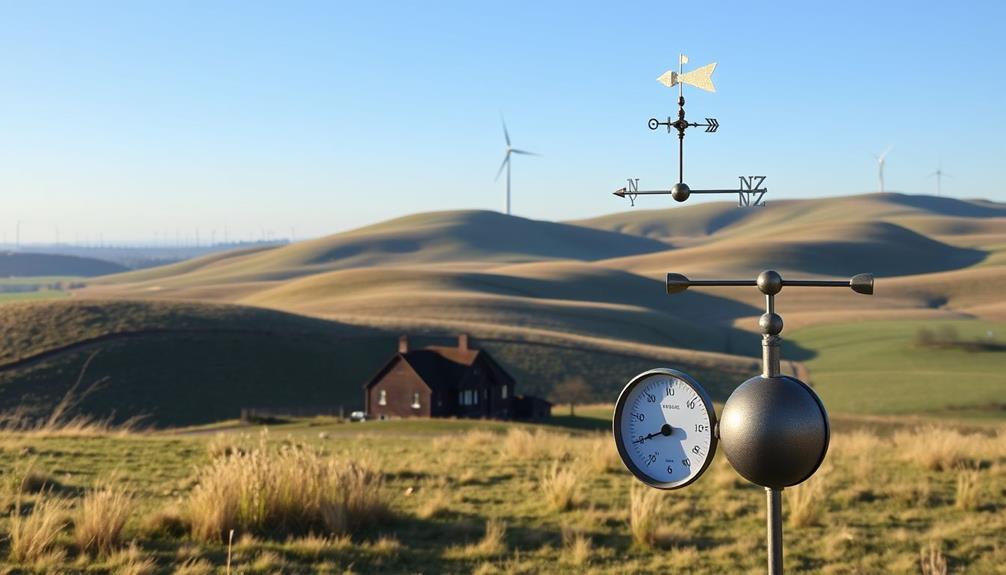
Evaluating wind resources is essential for ensuring your home wind generator operates efficiently and generates the energy you need. To harness small wind power effectively, you'll want to assess local wind speeds. Ideally, you need an average wind speed above 10-11 mph (4.5-5 m/s) to produce a suitable amount of kWh per month.
Accessing on-site wind data is the most reliable method for assessment. While state wind maps can provide general insights, they often lack the local detail you need. Consider checking local airport and weather station records for historical wind data.
Here's a quick overview of wind resource factors:
| Factor | Importance |
|---|---|
| Average Wind Speed | Vital for energy output |
| Terrain | Affects local wind patterns |
| Location | Coastal and ridgeline areas |
Frequently Asked Questions
How Big of a Wind Turbine Do You Need to Power a House?
To power your house effectively, you'll typically need a wind turbine sized between 5 to 15 kW. This range can produce enough energy to meet your household's electricity needs, given ideal wind conditions.
Are Home Wind Turbines Worth It?
If you're tired of skyrocketing electricity bills, home wind turbines can be worth it. They might save you up to 50%, especially if you live in a windy area. Just consider the initial investment and local conditions.
What Is the Major Disadvantage of Wind Power Generator?
The major disadvantage of wind power generators is their reliance on consistent wind speeds. If the wind isn't strong enough, you won't generate sufficient energy, potentially leaving you dependent on other energy sources for your needs.
How Much Does It Cost to Install a Wind Turbine at Home?
Installing a home wind turbine typically costs between $15,000 and $75,000, depending on the system's size and local factors. You might also benefit from federal tax credits to help offset these expenses.
Conclusion
In a world spinning towards sustainability, wind generators can be your ticket to harnessing nature's breath. By embracing this affordable renewable energy, you're not just saving money; you're joining a movement that dances with the breeze. Remember, every gust that turns those blades is a step towards a greener future. So, take the plunge, install a wind system, and watch your home soar on the wings of clean energy. Let the winds of change fill your sails!




